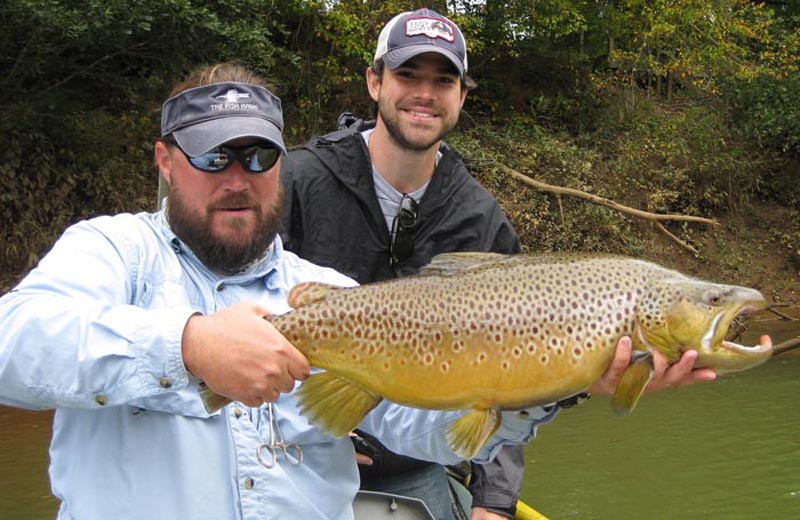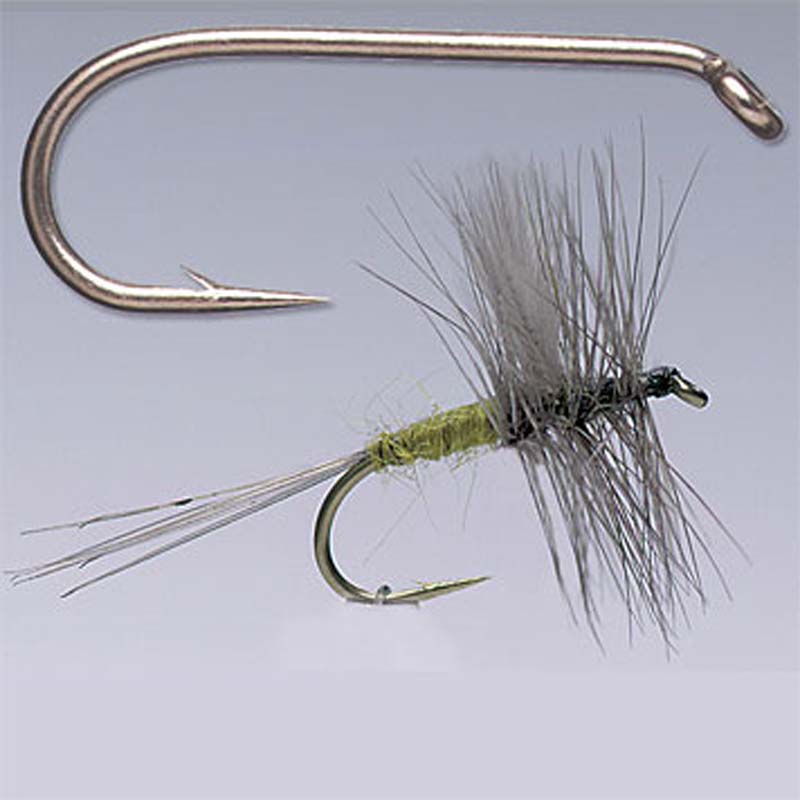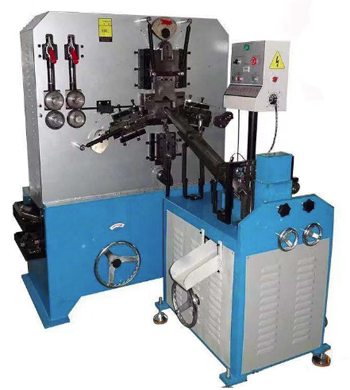
Mesolithic, and neolithic fishing tools, Museum of Sergiev Posad in the Sergiyevo-Posadsky District [north of Moscow]. Fishing hooks, needles and bone shuttles for fishing net. Photographer Лапоть. A commons image.
If you use the wrong hook, you may not get a bite. Use the wrong hook, and the fly might swim upside down. Use the wrong hook, and your trophy catch may straighten the hook out and escape. Use the wrong hook, and it might kill a fish planned to be released. Use a barbed hook, and you may damage to death a catches mouth. Use the wrong hook, and the fish will use it as a lever and spit the hook. Use too small a hook, and the fish will swallow it and die.
By Skip Clement
Steve Hudson, the former editor of a large publishing house, is now the owner of his publishing company, Chattahoochee Media Group. Steve is also an author (many titles) of everything from fly tying, fly angling, and hiking the North Georgia mountains of Appalachia, has a lot to say about hooks in his famous book titled A Structured Course in Fly Tying – Hudson noted:
Here’s an interesting question for you: What’s the most critical thing that a fly fisherman brings to the water?
Rods are important. After all, you need ’em to get the fly to the fish. Having the right fly is essential; otherwise, you won’t interest the fish at all. The line is important, too, for it’s what keeps everything connected.
But I’d like to suggest that there’s one thing even more important than any of those. It’s something small and inexpensive – but something often overlooked.
It’s the lowly hook. For if your hook is not the right one, you might as well not fish at all.”
Hooks used in fly fishing had, for decades, been of little interest to me except knowing what would work for the fish I was fishing. Then, I got serious about fly tying with a preference for tube flies. Hooks took on a whole new meaning.”
If you use the wrong hook, and you may not get a bite. Use the wrong hook, and your trophy catch may straighten the hook out and escape. Use the wrong hook, and it might have played a role in killing a fish planned to be released. Use a barbed hook, and you may damage to death a catches mouth. Use the wrong hook, and the fish will use it as a lever and spit the hook. Use too small a hook, and the fish will swallow it and die. So, choosing a hook is both complicated and vital.
Almost all the information about hooks comes from the annals of fly fishing for trout and have a decidedly eastern origin.
A look at hook construction:
EYE – The eye is the loop at the front of the hook where you tie the fly to the leader. All eyes have a diameter. Although the eye diameter never has an actual measurement called out, it is a useful metric that gives fly tyers guidance on how to position thread or where to tie off or start materials. For example, start your thread “one eye diameter” back from the rear of the eye of the hook.
Hook eyes have one of three different configurations (turned up, straight, or turned down). Turned-down and straight eyes are most common. Different hook models may be identical except for how the eyes configuration. For example, Tiemco model 100 and 101 hooks are both designed for dry flies; model 100 hooks have a standard turned-down eye, while model 101 hooks have a straight eye.
In practice, while the style of the hook’s eye can have some influence on how the fly behaves, many tyers use turned-down and straight-eyed hooks more or less interchangeably.
SHANK – The hook shank is the straight portion of the hook that runs from the eye to the bend. Hooks for popper patterns are kinked to hold the body from rotating patterns.
THROAT – The end of the shank as it makes a turn.
BEND – Each fly fishing hook is curved at the bend – where it curves around to form the hook.
BARB – The barb is the sharp-pointed piece at the end of the hook. It becomes caught in the fish’s mouth and injures the fish. A better solution is to nip the barb off, or better, buy barbless hooks.
POINT – The very pointed end of the barb/hook is known as the point.
GAPE [gap] – A fly fishing hook’s gape or gap is the space that is inside the bend. It runs from the shank to the point.

A Chattahoochee River wild brown trout on a big, articulated trout streamer named Chewie. Alaska, Georgia, Tennessee, North Carolina fishing guide and casting instructor Chad Bryson with a happy client. Image credit Capt. Chad Bryson. Was it the CHEWIE we knew in Star Wars?
Three are several types of hooks, but only three materials make hooks:
- Carbon
- Steel
- Stainless steel
Hook comparison charts:
Hook comparison charts are confusing and inaccurate. The “hook” industry does not have standardization, so any conversion chart that attempts to ‘compare’ equivalent hooks based on similar applications comes up pretty lame. With no standard, it is impossible to get an accurate conversion chart. All sizes are relative.
Many tyers with decades of experience eventually memorize the hooks they like and picked one manufacturer and became familiar with its nomenclature and hook profiles.
Also, in a tying magazine, websites, or on a YouTube video – almost always have an accompanying ‘recipe,’ which calls out the hook particulars.
Barbed or Barbless:
There are two good reasons to go barbless; one, when you hook yourself (yes you will), fishing partner or guide it is an almost a painless removal; two, a barbed hook can kill a released fish by having destroyed its mouth.
Holding a fish on with a barbless hook involves keeping the pressure on the fish. Slack, and it is off.
Fly fishing hook sizes:
Hook sizes are accounted for by the measurement of the gape or gap, and that measurement is from the inside distance from hook point to the shank and numbers designate them #1 to #28. A #28 hook is much smaller than a #1 hook. Hooks designated with an aught – 1/0, 2/0, and so forth are larger than #1 hook. Starting with 1/0, the smallest aught hook sizes that increase in size like 20/0.
Regarding hook sizes, Orvis writes in their Fly Fishing Guide:
Hook sizes used for flies range from less than 1/8 of an inch in length for the smallest to 3 inches for the largest. The actual size of a fly can be much larger; in some saltwater flies, the materials used will extend up to 6 inches beyond the bend of the hook. In the smaller trout-sized hook, we use even numbers 2 through 28; the larger the number, the smaller the fly. Hooks larger than size 2 use a numbering system that increases as the size increases, using a slash/zero after the number to distinguish them.”— Orvis

Big Eye Down-Eye Style Fly-Tying Hook – Orvis
Hook Length:
A hook length can be shorter or longer than a ‘standard’ size hook. For instance, if you wanted longer than standard #2 hook, you would ask for a 1X long or 1XL – all the way up to 4XL.
If you wanted a shorter than standard #2, you would ask for 1XS and so on.
Wire diameter or hook weight:
Hooks are made of drawn metal wire in stainless steel, carbon, and steel – as mentioned above. In the final process, the hooks are dipped or sprayed with a coating, which reduces or eliminates rust.
If you lose a fish to a straightened hook, you used too fine a hook wire.
Trout hooks for dry flies are usually identified as 1XLight and 1XL “Fine,” and some manufacturers just mark their packets as “Dry Fly.”
The shapes of hooks:
Hooks are either straight shanked, curved shanked, or popper built with a kink to advantage no rotation of a popper fly.
A curved shank is excellent for freshwater scud, larvae, worms, and emerger patterns. They also enhance the natural escape profile in a saltwater shrimp pattern.

This beauty was caught and released in extremely shallow water, Memorial Day 2010. Photo: Captain Andrew Derr with a happy client fishing his 2/0 Sand Eel.
Some hook types for fly fishing:
Circle Hooks – these hooks increase hooking percentages and also help to prevent gut hooking fish. When a strike occurs, the hook slides out of the fish’s throat. The barb does not penetrate until the hook reaches the corner of the mouth. At that point, the hook point pivots and sets for a safe, solid hookup. The primary thing to remember about circle hooks is that they do not require a standard hard, hook set. Setting the hook in that manner will almost guarantee that a fish is lost. Instead, simply apply steady pressure.
Octopus Hooks – are short-shank hooks that feature a round shank and bend, but it’s not as dramatic as circle hooks. Octopus hooks are for a natural presentation.
Worm Hooks – worm hooks have a slight bend just below the hook eye and fished weedless make them weedless. Most worm hooks have wide gaps to ensure adequate clearance for the point to penetrate.
Jig Hooks – hooks with a bend just below the hook eye, with 90-degrees being the most common. These hooks help the jigging retrieve.
Wet Fly – the most common shapes are round bend and Sproat bend. Round bend hooks have a perfectly round bed. Sproat bend hooks are fly fishing hooks that flatten out as the curve comes to a point. This technique is supposed to add strength and make them better at hooking onto passing nibbling trout.
- Heavyweight wet fly hooks are ideal for a large variety of wet flies and nymphs to even tadpoles.
- Medium-weight wet fly hooks are trendy because they are great for most nymph patterns and are also light enough for many dry fly patterns.
Dry Fly Hooks – is a fine wire hook and often be weak, and isn’t ideal for larger trout. The key is to find the balance between strength and matching the insects in the area.
Caddis Hooks – long-shanked hooks with a slightly upturned eye. This type of hook pattern mimics an insect rising toward the surface and should be fished higher in the water than most other larvae imitations.
Nymph Hooks – When choosing fly fishing hooks for nymph patterns, you’ll want to pay attention to what insects you see on your favorite river. You’ll want to select small hooks, and typically have a humpback profile, and the shank is rarely straight.
Steve Hudson wrote:
Fortunately, navigating the universe of hook styles is not as hard as you’d think. One thing that helps is the fact that most fly recipes offer specific suggestions on what hook you should use. Some provide generic guidance (as in – size 12 or 14 light-wire standard length dry fly hook) while others may offer the specific manufacturer and model number recommendations.
If you find that your local fly shop does not carry the exact brand mentioned, just ask for an equivalent hook from the manufacturer that the shop does carry. Most manufacturers make most models and shop sales folks; usually, guides will find what you need.
Most fly recipes also include photos that let you see what the finished fly should look like completed. That can give you an idea of whether you’re looking at a hook with a “standard” shank length, for example, or one with a “long” or “short” shank length. With experience, you’ll find it reasonably easy to determine what sort of hook you need simply from knowing the type of fly (wet/sinking or dry/floating) and taking a look at a photo or sample of the finished product.”

Modern Chinese wire product making machine capable of makng fishing hooks.
Tips:
- Never buy a cheap big box store or no-name online hooks. You could be getting a wire hook not much more robust than a paper clip or as dull as your brother-in-law. Stick with brand names that fly shops sell.
- Never fish a rusty hook. If its point is damaged, discard it unless saltwater hook in the slash/aught size and sharpen.
- Don’t buy open eye hooks not closed completely. They will also have sharp edges and will cut you off.
- Do not put a fly on with a thin wire hook and fish with a 10-weight rod and 20-pound test tippet – on the set; you’ll likely straighten the hook.
Source: With permission, Steve Hudson’s chapter on Hooks: A Structured Course in Fly Tying, Captain Andrew Derr, Orvis, Trout and Salmon.org, and other miscellaneous sources.

